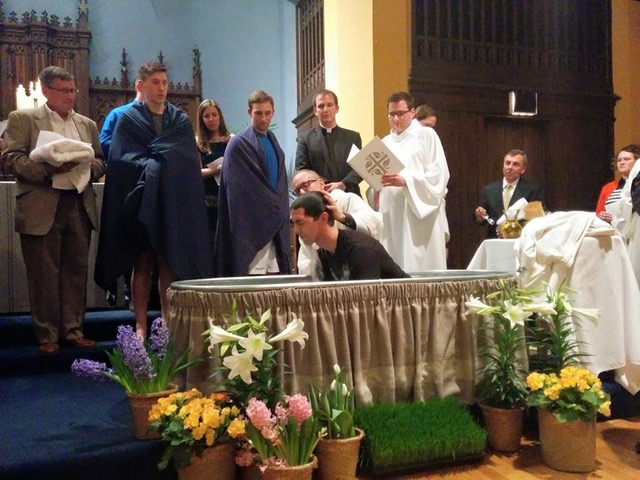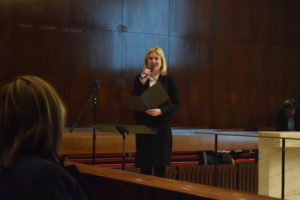Lutherans are taking action across the country! Below you will find our monthly State Advocacy Newsletter. Share with your friends!
ELCA Advocacy Office, Washington, D.C.
The Rev. Amy Reumann, director
Easter Message:
“Jesus is Risen!” is an invitation to a new hope. It declares the Good Friday landscape of shadow, suffering and death as a persistent, but not a final, reality. Easter proclaims God’s power to write a new future for our lives and our world, a reality marked by love that transforms and reconciliation beyond what divides us. Advocacy can be an act of this Easter hope, witnessing to the God of resurrection when we speak to new possibilities for our life together. Lutherans highlight this hope in the descriptions below, as we speak to the suffering in the South Sudan, advocate for climate justice and give testimony for just and humane policies towards migrants and refugees.
ELCA.org/advocacy
ADVOCACY CONVENING: ELCA Advocacy hosted our 2017 Advocacy Convening in late March. This event brought together bishops, local community leaders, and faith partners in Washington, D.C. Convening participants, joined by religious representatives attending LIRS’ Lutheran Immigration Leadership Summit, urged lawmakers to welcome and protect vulnerable refugees and migrants. Through ELCA World Hunger and AMMPARO, our church is working for just and humane policies toward migrants in and outside the U.S. You can learn more and send an advocacy message to your elected officials at the ELCA Advocacy action center. (Photograph left)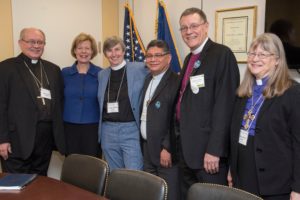
CLIMATE CHANGE EXECUTIVE ORDER: On March 28, President Trump signed an executive order that calls for the review, repeal, or rescission of various Obama administration’s climate change initiatives, including rescinding the Climate Action Plan (and associated guidance/regulatory items implementing that Plan). This action will likely adversely impact our nation’s progress in combating climate change. The order also calls for the review of the Clean Power Plan (CPP) regulations which was a key part of the Climate Action Plan.
The implementation and objective of the CPP was a top ELCA Advocacy priority in 2014. Last month ELCA Advocacy released a statement on the executive order shortly after it was signed by the president. The statement encouraged the administration to re-examine its actions and remain true to its earlier stated commitments to stewardship, sustainability and justice.
SOUTH SUDAN: The United Nations formally declared that several regions of South Sudan are undergoing severe famine—its first case of making such a declaration since 2011. Across several neighboring countries, an estimated 7 million people are said to be affected by the famine, and more than 100,000 in South Sudan are reported to face imminent starvation.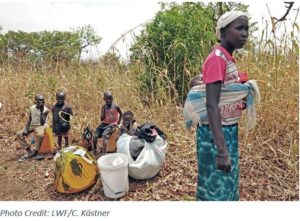
Famine, coupled with the ongoing civil war, has taken a disastrous humanitarian toll across the region—with countless civilians being displaced or targeted for attack. International aid is essential to address the critical situation in South Sudan. Advocates can take action on the issue at advocacy.ELCA.org and learn how the ELCA is responding in the region through Lutheran Disaster Response. (Photograph right)
HEALTH CARE UPDATE: The work on improving the Affordable Care Act continues. Click here to hear from Presiding Bishop Elizabeth Eaton on this important issue. Thank you for your continued engagement!
STUDENT GROUPS: Throughout March, a number of student groups from campus ministries visited the Advocacy office. After presentations that focused on the Lutheran values that underpin advocacy, groups went on congressional office visits. It has been tremendously encouraging that so many young adults are invested in learning more about what the ELCA is saying about social and political realities.
Lutheran Office for World Community, United Nations, New York, N.Y.
Dennis Frado, director
CSW61: The sixty-first session of the Commission on the Status of Women (CSW) took place at the United Nations Headquarters in New York March 13-24. The theme was “Women’s Economic Empowerment in the Changing World of Work,” with the emerging focus area on empowerment of indigenous women. (Photograph left: group picture)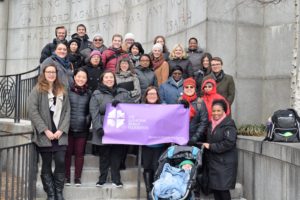
Our Lutheran delegation consisted of 22 delegates, including a LWF Women in Church and Society representative from the Costa Rican church. From the ELCA, we had representatives from ELCA World Hunger, Justice for Women Program, American Indian and Alaska Native Ministries, International Leaders program and Young Adults in Global Mission.
LOWC participated in the planning and execution of various projects and side-events throughout CSW, including Ecumenical Women’s Orientation Day, a Strategy and Advocacy Roundtable hosted by Faith and Feminism Working Group, and a Public Witness event to link up to end gender-based violence, organized by Ecumenical Women and co-sponsored by U.N. Women, UNICEF and the U.N. Interagency Task Force on Religion and Development.
In an unprecedented move by a U.S. administration, the United States sent controversial delegates to CSW from the conservative Heritage Foundation and the Center for Family and Human Rights (C-FAM), described as “an anti-LGBT hate group” by the Southern Poverty Law Center.
CSW ended with the adoption of the agreed conclusions. The conclusions highlight barriers women face, such as unequal working conditions, gender stereotypes, occupational segregation, unequal pay, sexual- and gender-based violence etc. Countries committed to implementing economic and social policies that will lead to women’s economic empowerment.
California
Mark Carlson, Lutheran Office of Public Policy
loppca.org
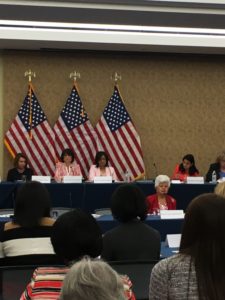 During the ELCA Advocacy Convening in Washington, D. C., the Democratic Women’s Working Group on Immigration and Refugees held a forum at which a representative of LIRS testified about the separation of families, and Bishop Guy Erwin of the Southwest California Synod was introduced. The photo includes five representatives from California: Nancy Pelosi, Lucille
During the ELCA Advocacy Convening in Washington, D. C., the Democratic Women’s Working Group on Immigration and Refugees held a forum at which a representative of LIRS testified about the separation of families, and Bishop Guy Erwin of the Southwest California Synod was introduced. The photo includes five representatives from California: Nancy Pelosi, Lucille 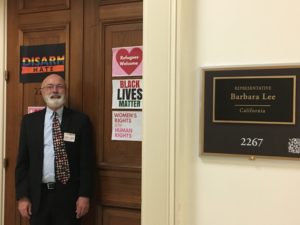 Roybal-Allard, Grace Napolitano, Nanette Barragán, and Zoe Lofgren (a Lutheran). (Photograph left)
Roybal-Allard, Grace Napolitano, Nanette Barragán, and Zoe Lofgren (a Lutheran). (Photograph left)
Mark Carlson, director of LOPP-CA, found a friendly California office in Washington, D. C. (Photograph right)
On April 4, the 49th anniversary of the assassination of the Rev. Martin Luther King Jr., Carlson participated in an inspiring event at Miracles of Faith Church in Oakland linking the anniversary of the 95 Theses with a y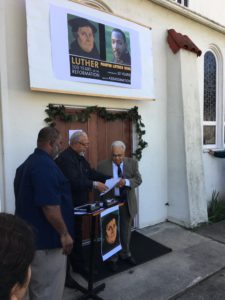 ear-long remembrance of King. The Rev. Gregg Brown, center, hands the Rev. Phil Lawson (brother of Rev. James Lawson), right, some theses to nail to the
ear-long remembrance of King. The Rev. Gregg Brown, center, hands the Rev. Phil Lawson (brother of Rev. James Lawson), right, some theses to nail to the 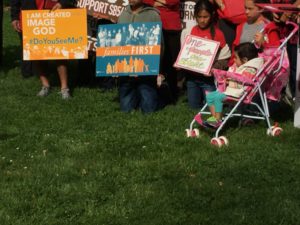 church door. (Photograph left)
church door. (Photograph left)
LOPP-CA helped welcome CHIRLA, the Coalition for Humane Immigrant Rights of Los Angeles, as it opened an office in Sacramento, a voice for many of the 10 million people who live in Los Angeles County. In its early days, CHIRLA’s L.A. office was at Angelica Lutheran Church. A priority for immigrant communities is SB 54, the California Values Act, which passed the Senate. Faith advocates distributed a joint floor alert prior to the vote. (Photograph right)
Colorado
Peter Severson, Lutheran Advocacy Ministry–Colorado
Lam-co.org
LEGISLATIVE SESSION: The Colorado General Assembly has taken up consideration of our fiscal year 2017-2018 budget. The Joint Budget Committee proposed significant cuts to the hospital provider fee in order to deal with a significant shortfall created by automatically-triggered Taxpayer Bill of Rights refunds. The total shortfall is approximately $264 million. Lutheran Advocacy is speaking out to legislators to say that cuts should not be made on the backs of low-income people. A proposed bipartisan fix to address the hospital funding piece, SB 17-267, is risky because it includes automatic 2 percent cuts across the board for all state departments. We are monitoring that bill and pushing for amendments in the House.
CONGREGATIONAL VISITS: LAM-CO has been on the road, visiting congregations throughout the season of Lent to preach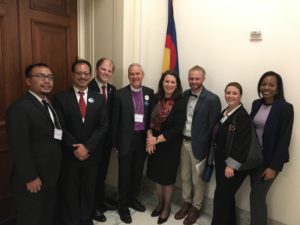 and teach about advocacy and the current legislative session. Recent visits include St. Paul in Calhan, St. Andrew in Arvada, and Spirit of Joy in Fort Collins. Thanks to all who joined us in each congregation!
and teach about advocacy and the current legislative session. Recent visits include St. Paul in Calhan, St. Andrew in Arvada, and Spirit of Joy in Fort Collins. Thanks to all who joined us in each congregation!
WASHINGTON, D.C., CONVENING: We participated in the 2017 ELCA Advocacy Convening in Washington, D.C., in March. LAM-CO Director Peter Severson, Bishop Jim Gonia, and community leaders Hendrik Samosir and Josh Stallings made up the Colorado delegation, visiting Capitol Hill offices to talk about refugee and immigration issues. (Photograph right: ELCA advocates visit Rep. Diana DeGette, center.)
Minnesota
Tammy Walhof, Lutheran Advocacy – Minnesota
tammy@lcppm.org
The last couple of months have been very busy for Lutheran Advocacy-MN!
ADVOCACY EVENTS: Lutheran Advocacy-MN and LSS of MN held Lutheran Leader Day at the Capitol for Minnesota bishops, pastors and church leaders. The advocacy focus was affordable housing, while workshops were also included on immigration, sex trafficking, and clean energy. Minnesota bishops led the opening worship and facilitated the closing reception with legislators, including comments by Rep. Alice Hausman, Sen. John Marty, and a moving childhood affordable-housing story by Sen. Dan Hall. (Photograph below: Sen. Jeff Hayden explains barriers people face in affordable housing due to race and rural workforce issues.)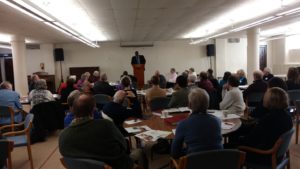
Four bishops, a grad student, and LA-MN Director Tammy Walhof represented Minnesota at the ELCA Advocacy Convening, including in meetings with members of the Minnesota congressional delegation about immigration. Earlier in March, Walhof joined other state public policy directors in Washington, D.C., for the National Anti-Hunger Policy Conference and Lobby Day.
CLIMATE, HUNGER, AND CLEAN WATER: For the Region 3 Hunger Event, Walhof facilitated Bible study sessions on words like dominion, earth keeping, and sabbath and led sessions on climate change basics and hunger, and to introduce LA-MN’s 2017 issue agenda. Ryan Cumming (ELCA World Hunger) introduced ELCA work on creation care, real stories about climate impact on poor people, and activities to increase understanding of climate impact on hunger. Walhof also worked with the Northeastern Minnesota Synod on their Water Summit and presented environmental issues happening at the state Legislature.
North Carolina
GeoRene Jones, North Carolina Justice & Advocacy Team
We are excited about a special opportunity arriving in the form of an anonymous-donor challenge benefitting ELCA World Hunger. Bishop Timothy Smith is preparing and will send details to leaders of our 201 congregations. We give thanks for those loving hearts who respond generously to the prompting of the Holy Spirit for the work God is doing in our synod.
Ohio
Nick Bates, The Hunger Network
hungernetohio.com
State advocates released a new “Report of Reports” on April 3 highlighting how Ohio measures up to the nation on a series of statistics. Each section takes only a few minutes to read – perfect for the busy church professional! Ohio has shown signs of improvement in health insurance access and preschool access but continues to trail the nation on issues of food security and job growth. Read our new report “State of Ohio 2017: A story through statistics.”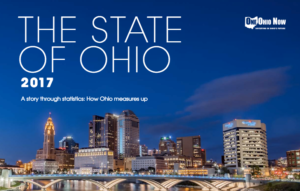
Lutheran advocates stormed Capitol Hill for our ELCA Advocacy Convening in partnership with Lutheran Immigration and Refugee Services. Bishop Abraham 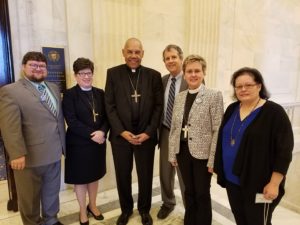 Allende, the Rev. Carmen Colon-Brown, Nick Bates, and Dr. Rev. Kristine Suna-Koro had the opportunity to speak with Sen. Sherrod Brown and Sen. Rob Portman about the important issue of immigration and how it impacts so many Ohioans. We also spoke with staff from the offices of Rep. Joyce Beatty (Columbus) and Rep. Warren Davidson (Troy). Also pictured with Sen. Brown is one of Ohio’s favorite children, Presiding Bishop Elizabeth Eaton.
Allende, the Rev. Carmen Colon-Brown, Nick Bates, and Dr. Rev. Kristine Suna-Koro had the opportunity to speak with Sen. Sherrod Brown and Sen. Rob Portman about the important issue of immigration and how it impacts so many Ohioans. We also spoke with staff from the offices of Rep. Joyce Beatty (Columbus) and Rep. Warren Davidson (Troy). Also pictured with Sen. Brown is one of Ohio’s favorite children, Presiding Bishop Elizabeth Eaton.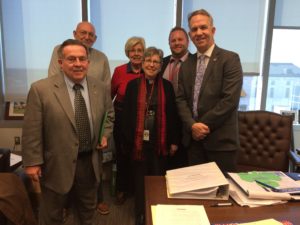
STATE BUDGET: The Ohio Budget process continues to drudge along. Dozens of sub-committee hearings were held in the House throughout February and March. After the Easter recess, the House will reconvene and present its recommendations. We will host an advocacy day in May to help our state senators understand that the budget is a moral document. Pictured below are faith leaders with Hunger Network in Ohio, Faith in Public Life, and the Ohio Council of Churches meeting with state Rep. Andrew Thompson, a member of St. Luke’s Lutheran Church in Marietta.
Join Our advocacy list! Sign up today at hungernetohio.com.
Pennsylvania
Tracey DePasquale, Lutheran Advocacy–Pennsylvania
Lutheranadvocacypa.org
LAMPa began March by organizing and participating in Ashes-To-Go at the state Capitol. This was the second year LAMPa and partners from the Council of Churches, Episcopal Diocese of Central Pennsylvania and Lutheran congregations offered prayers and anointing to mark the beginning of Lent. The practice was welcomed inside and outside the building. Drivers even pulled over and hopped out of their vehicles so that they and/or passengers could participate! (Photograph below)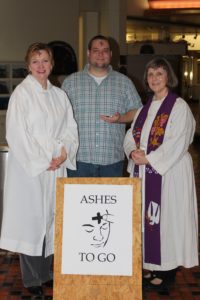
LAMPa Director Tracey DePasquale was grateful to connect with colleagues from around the state and around the country at the Domestic Mission all-staff gathering in Chicago, followed by a productive ELCA World Hunger team-building day. The 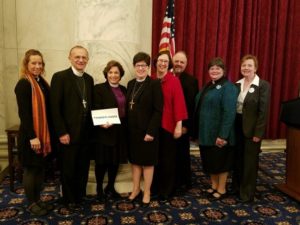 following week, she participated in Trinity Institute 2017: Water Justice, hosted by the Lutheran Theological Seminary in Gettysburg, Lower Susquehanna Synod and the Episcopal Diocese of Central Pennsylvania. All are eager to work together on water advocacy, which LAMPa will resource and organize.
following week, she participated in Trinity Institute 2017: Water Justice, hosted by the Lutheran Theological Seminary in Gettysburg, Lower Susquehanna Synod and the Episcopal Diocese of Central Pennsylvania. All are eager to work together on water advocacy, which LAMPa will resource and organize.
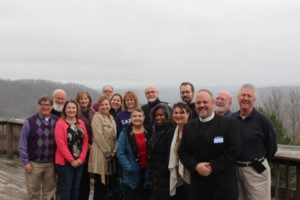 DePasquale joined ELCA Advocacy staff, bishops and lay leaders from around the country convened in Washington, D.C., the last week of March to advocate with members of Congress in support of refugee resettlement and increased funding for efforts to protect migrant children and address the root causes of migration in Central America. (Photograph right)
DePasquale joined ELCA Advocacy staff, bishops and lay leaders from around the country convened in Washington, D.C., the last week of March to advocate with members of Congress in support of refugee resettlement and increased funding for efforts to protect migrant children and address the root causes of migration in Central America. (Photograph right)
March ended with her in Pipestem, W.V., connecting with ELCA pastors, bishops and advocates at the State of Appalachia Conference, organized by Creation Justice Ministries, to support the church’s response to the spiritual, health, economic and environmental needs in that region. (Photograph above)
Southeastern Synod
Hilton Austin
HUMAN TRAFFICKING: In Georgia, several of us joined 500-600 other advocates for the Anti-Sex Trafficking Lobby Day and were successful in pushing HB341, which adds those who patronize or solicit a person who is the victim of sexual servitude to the offense of sex trafficking, to be considered for passage prior to sine die. The bill was passed and is on the governor’s desk. HB86 adds acts involving trafficking a person for sexual servitude to the definition of sexual abuse in the code section 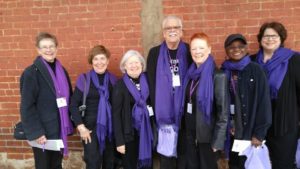 delineating requirements for mandatory reporting of child abuse. The bill was passed and is on the governor’s desk. SB104 adds government buildings to the list of locations required to post the human trafficking hotline notice and requires government entities to have a hyperlink to the human trafficking hotline model notice on their websites. The bill was passed and is on the governor’s desk. (Photograph left)
delineating requirements for mandatory reporting of child abuse. The bill was passed and is on the governor’s desk. SB104 adds government buildings to the list of locations required to post the human trafficking hotline notice and requires government entities to have a hyperlink to the human trafficking hotline model notice on their websites. The bill was passed and is on the governor’s desk. (Photograph left)
CRIMINAL JUSTICE REFORM: Joining with our other partners, SB174, which enacts several reforms recommended by the Georgia Council for Criminal Justice Reform, was successfully passed and is on the governor’s desk. The bill clarifies and improves protocols involving family treatment courts; revises provisions concerning non-violent felonies, probation and validation of the Department of Corrections’ Risk Needs Assessment. It also clarifies and revises provisions regarding probation, parole, conditional release and fees. The bill was passed and is on the governor’s desk. HB261 allows certain individuals sentenced to a prison term between March 18, 1968, and Oct. 31, 1982, to petition the superior court in the county in which he or she was convicted for exoneration of guilt and discharge. The bill was passed and is on the governor’s desk.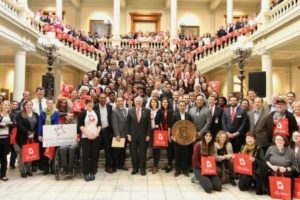
IMMIGRATION: Many of our folks joined with other partners for the Coalition of Refugee Services Agencies Lobby Day and New American Celebration. (Photograph right)
CONGREGATIONAL ADVOCACY TEAMS: While we are in the early stages of this grass-roots movement, congregational advocacy teams are popping up all across the synod. This past week our new Congregational Advocacy Guide was added to the resources tab on the synod website. This will be the focus of our presence at the Synod Assembly in May; we will be offering numerous ways congregations can be involved in advocacy. It is perfect timing considering the theme of our assembly is “We are Church for the Sake of the World.”
Washington
Paul Benz, Faith Acton Network
fanwa.org
LEGISLATIVE HIGHLIGHTS: We are in week 13 of our 15-week regular session. Most committee-hearing work is done and now the final budget negotiations for our 2017-2019 $42 billion biennial budget begins with a handful of budget leaders from the House and Senate caucuses. FAN testified along with more than 100 organizations in favor of the House Democrats’ revenue package that had three primary funding sources for the budget: instituting a capital-gains tax, increasing our business and occupation tax with a generous exemption for small businesses, and closing a few tax exemptions (of which Washington has close to 700). One bill from FAN’s legislative priorities that is still alive is the WA Kids Ready to Learn Act, which establishes a breakfast-after-the-bell type of policy for our high-poverty schools to increase accessibility for breakfast to be served in a variety of settings. Also, two anti-human 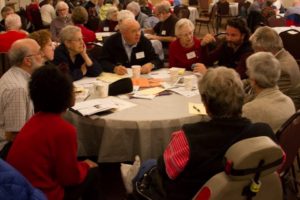 trafficking bills have now passed and are awaiting the signature of the governor.
trafficking bills have now passed and are awaiting the signature of the governor.
SPRING SUMMITS: As a part of FAN’s regular programming, we are now planning for our four regional summits in Yakima May 7, Spokane May 21, Vancouver June 4, and Seattle June 11. This is a great time to gather FAN advocates and our friends and allies to have table conversations about what the critical issues are for our state and hear and discuss how our state’s regular session went. (Photograph right: FAN advocates gather in issue work groups last year at our Seattle Summit.)
Wisconsin
Cindy Crane, Lutheran Office for Public Policy in Wisconsin
Loppw.org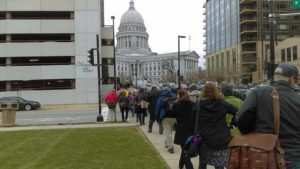
ADVOCACY DAY IN WISCONSIN: LOPPW is part of People of Faith United for Justice, an interfaith group that holds an Advocacy Day during state budget years. We focused on social safety-net programs, anti-sex trafficking, and water. (Photograph right)
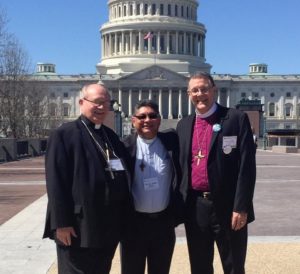 ELCA ADVOCACY CONVENING IN D.C.: LOPPW joined co-workers in Christ from around the country. The speakers and panels gave us their expertise and their hearts. LOPPW’s director joined Bishop Jim Arends, La Crosse Area Synod; the Rev. Walter Baires, Greater Milwaukee Synod; and Bishop Jerry Mansholt, East Central Synod to advocate for welcoming refugees and immigrants. (Photograph left)
ELCA ADVOCACY CONVENING IN D.C.: LOPPW joined co-workers in Christ from around the country. The speakers and panels gave us their expertise and their hearts. LOPPW’s director joined Bishop Jim Arends, La Crosse Area Synod; the Rev. Walter Baires, Greater Milwaukee Synod; and Bishop Jerry Mansholt, East Central Synod to advocate for welcoming refugees and immigrants. (Photograph left)
FRAC IN D.C.: LOPPW’s director joined colleagues for an informative and inspiring Food Research Action Center (FRAC) conference. LOPPW will use information especially related to the farm bill and its possible impact on school meals. We do not want federal funding diminished or turned into block grants.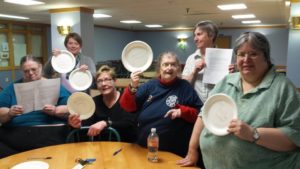
LETTER WRITING: The director was invited by Triangle Ministry, which is in a low-income housing complex in Madison, to lead a forum. She used information from FRAC with an invitation to the residents to write personal notes on paper plates. (Photograph right)
WORKSHOPS: Advisory Council members the Rev. Diane House and Joyce Anderson led a presentation on Martin Luther and economic justice at a Northwest Synod of Wisconsin event. The director led the same presentation three times on the same day at an East-Central Synod of Wisconsin event. Meteorologist Bob Lindmeier led workshops on climate change in congregations for the South-Central Synod of Wisconsin/LOPPW Care for God’s Creation Team.
RENEWABLE ENERGY: Our table is planning ways to make local impacts with partners in strategic parts of the state.

 of greenhouse gases such as carbon dioxide in our atmosphere.
of greenhouse gases such as carbon dioxide in our atmosphere. It is through science that we find the mechanism to alert us of problems that warrant our attention. It is through our God-given wisdom that we utilize science to be God’s stewards while we are here on earth. Value science. Embrace it. Thank God for the gift of human wisdom that enables us to use science for the benefit of all. Let us pray.
It is through science that we find the mechanism to alert us of problems that warrant our attention. It is through our God-given wisdom that we utilize science to be God’s stewards while we are here on earth. Value science. Embrace it. Thank God for the gift of human wisdom that enables us to use science for the benefit of all. Let us pray.























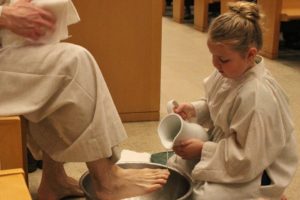 At Christ Church, Maundy
At Christ Church, Maundy 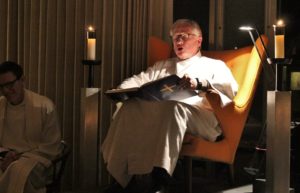 Christ Church’s Easter Vigil is a nomadic affair; the congregation wanders through several locations before ending up crowded around the table for the meal. For me, the most moving part is when, like the disciples two thousand years ago, we gather in a room to tell each other stories and sing songs. We hear God call the world into being, thrill at the Israelites’ narrow escape from Egypt, and laugh at the absurdity of King Nebuchadnezzar. These are the stories that bind us together in our faith and call us to lives of trust and love. Through these stories I feel connected to everyone in the room and to Christians around the world; whatever our differences, these stories are our shared foundation.
Christ Church’s Easter Vigil is a nomadic affair; the congregation wanders through several locations before ending up crowded around the table for the meal. For me, the most moving part is when, like the disciples two thousand years ago, we gather in a room to tell each other stories and sing songs. We hear God call the world into being, thrill at the Israelites’ narrow escape from Egypt, and laugh at the absurdity of King Nebuchadnezzar. These are the stories that bind us together in our faith and call us to lives of trust and love. Through these stories I feel connected to everyone in the room and to Christians around the world; whatever our differences, these stories are our shared foundation.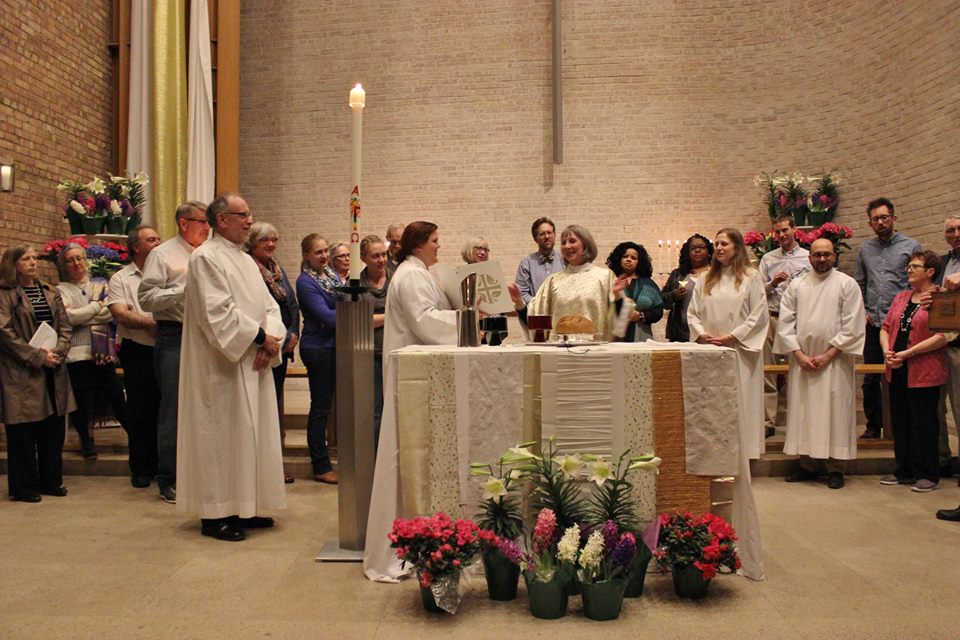

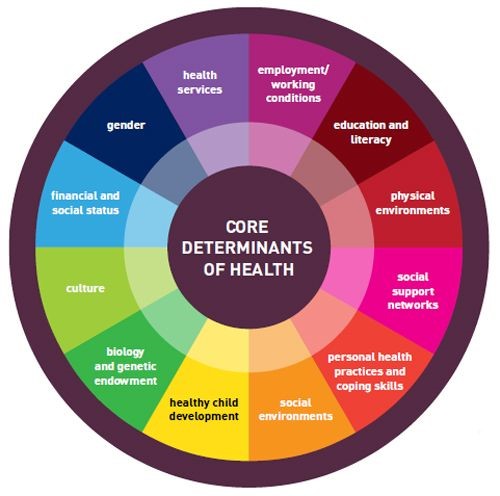
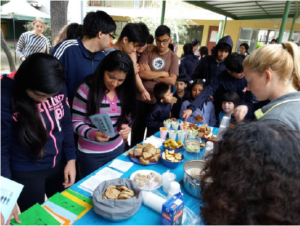
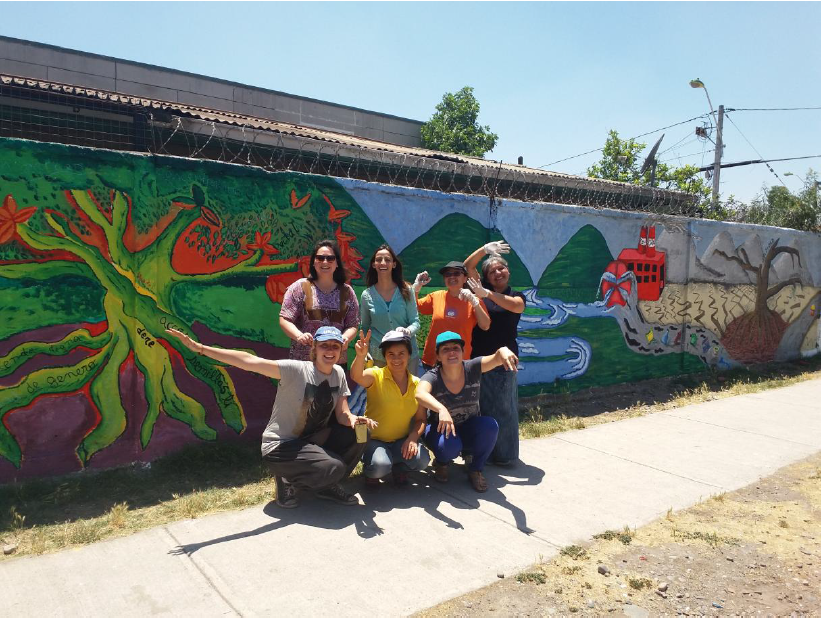
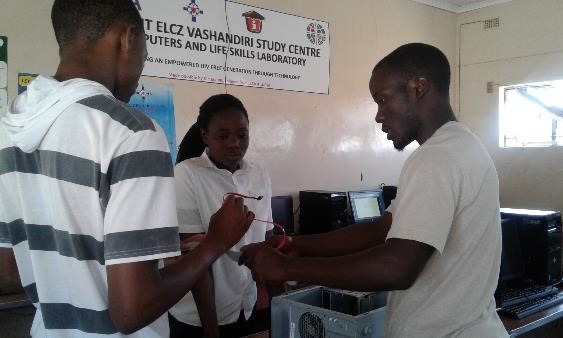
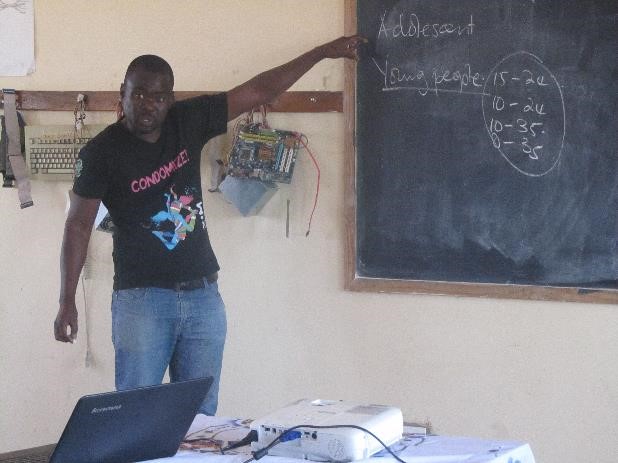
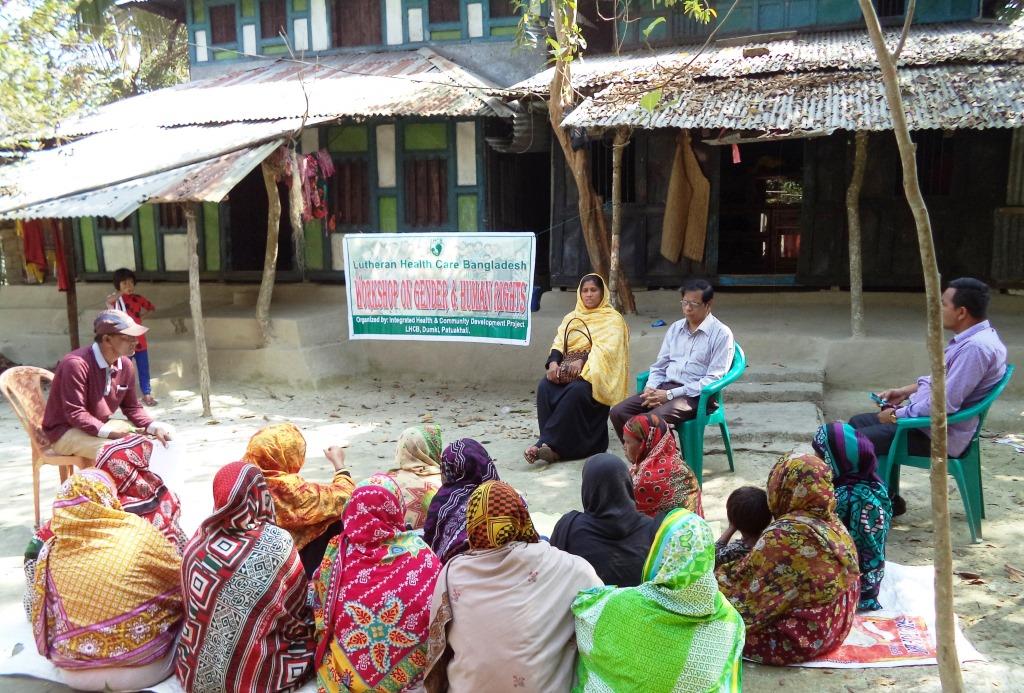
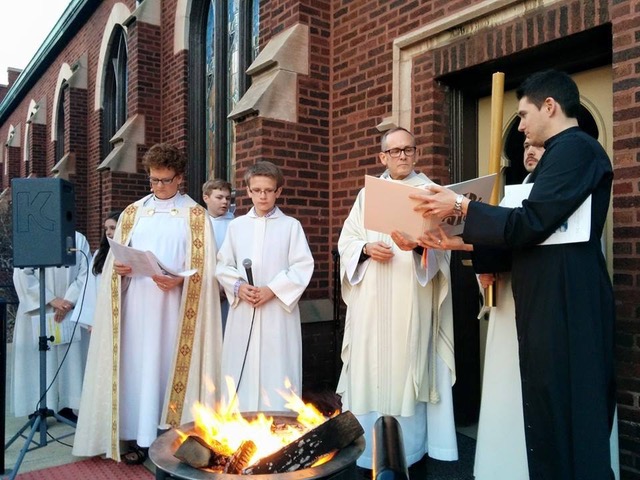 Most of us have had those mountaintop experiences–those moments when you can feel the adrenalin pumping through your body, when the senses are heightened, when the clouds part and you can see more clearly than yesterday—when everything finally makes sense. For me, that describes perfectly the experience of the Easter Vigil. It’s not just a “special service.” It is the Queen of all Feasts, to quote an ancient writer.
Most of us have had those mountaintop experiences–those moments when you can feel the adrenalin pumping through your body, when the senses are heightened, when the clouds part and you can see more clearly than yesterday—when everything finally makes sense. For me, that describes perfectly the experience of the Easter Vigil. It’s not just a “special service.” It is the Queen of all Feasts, to quote an ancient writer.